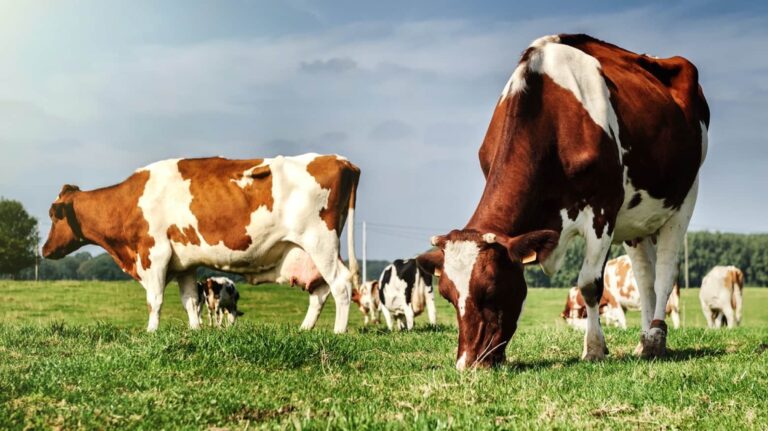
ON THE MOVE
Milk is inspected and sampled before being pumped into insulated, stainless steel tanker trucks and shipped to a dairy processing plant.









It’s important to check the labels of the foods you’re buying for their exact nutrient content. Milk alternatives like soy and almond beverages tend to have low amounts of naturally occurring calcium and vitamin D, and are fortified as a result. The amount of fortification is not standardized, so the nutrient content may vary from product to product. For tips on how to understand nutrition facts tables, visit the Government of Canada’s understanding food labels page.
|
Nutritional value per 250 mL |
||||
|
|
Skim |
1% |
2% |
Homogenized |
|
Energy (kCal) |
88 kCal |
108 kCal |
129 kCal |
155 kCal |
|
Total fat |
Trace |
3 g |
5 g |
8 g |
|
Saturated fat |
0.2 g |
1.6 g |
3.3 g |
5.4 g |
|
Cholesterol |
5 mg |
13 mg |
21 mg |
26 mg |
|
Sodium |
109 mg |
113 mg |
106 mg |
103 mg |
|
Carbohydrate |
13 g |
13 g |
12 g / 4% |
12 g / 4% |
|
Protein |
9 g |
9 g |
9 g |
8 g |
|
Sugars |
13 g |
13 g |
13 g |
14 g |
|
Vitamin A |
158 RAE* |
150 RAE* |
142 RAE* |
72 RAE* |
|
Calcium |
324 mg |
307 mg |
302 mg |
291 mg |
|
Iron |
0.1 mg |
0.1 mg |
0.1 mg |
0.1 mg |
|
Vitamin D |
2.7 μg |
2.6 μg |
2.8 μg |
2.7 μg |